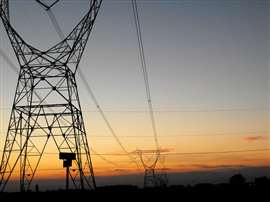How to make new EU crane regulations work
26 October 2023

Crane manufacturers and the ESTA crane and transport association are discussing how to make new European machinery regulations work in practice.
The European association of Abnormal Road Transport and Mobile Cranes (ESTA) and mobile crane manufacturers are working together to explore how to manage controversial new European Machinery Regulations that have now passed all political hurdles and are due to come into force by 2027.
A key difficulty is where the regulations stipulate that all mobile machinery, including mobile cranes and mobile aerial work platforms, should – “where relevant” – be designed to prevent contact with overhead power lines or, where the risk cannot be avoided, designed to ensure that all hazards ‘of an electrical nature’ are prevented.
Manufacturers have repeatedly pointed out that building such safeguards into the design and manufacture of the equipment is technically impossible. Despite their concerns, however, the regulations have been published largely unchanged. Critics also say the authors of the new regulations are confusing professional project management and site safety procedures with manufacturing standards.
The European Commission will produce guidance on how the regulations should be interpreted but in the meantime crane users and manufacturers are discussing amendments to the EN13000 standard that will take account of the new regulations. EN13000 is the European standard applicable to mobile cranes and specifies in detail the basic requirements of the machinery directive.
The discussions are taking place both through the European Standards Committee CEN/TC 147 WG 11 and at the the International Crane Stakeholders Assembly (ICSA). Both ESTA and the European manufacturers organisation FEM are part of ICSA which also has members in the USA, Canada, Australia and Japan. It is intended for the European organisations to be able to tap into the experience of other countries, especially the USA, where similar debates have taken place in recent years.
Users not manufacturers
Klaus Meissner, recently appointed ESTA crane expert, said, “The difficulty is that this is not a manufacturer’s issue, but a user’s issue.” Meissner, one of Europe’s leading crane industry experts, continued, “Quite simply, there is no technical solution applicable to mobile cranes, so in the standard for mobile cranes the manufacturers will have to include words about the danger of contact with power lines and the appropriate health and safety measures to be taken on site.
“In short, we will have to look at how to import site management safety practices into the mobile crane standard so that it is compliant with the regulations.”
Industry experts have long said they would support any practical measures to improve safety, but that some requirements in the new machinery regulations were impossible to deliver.
The specific concerns focus on a proposal hidden away in the depths of the regulations – to be precise in Annex III, Part 3, point 3.5.4. The text of the section reads as follows:
“Depending on its height, mobile machinery or related products shall, where relevant, be designed, constructed and equipped, so as to prevent the risk of contact with an energised overhead power line or the risk of creating an electric arc between any part of the machinery or an operator driving the machinery and an energised overhead power line.
“When the risk to the persons operating machinery incurred by the contact with an energised overhead power line cannot be fully avoided, mobile machinery or related product shall be designed, constructed and equipped so as to prevent any electrical hazards.”
The new European Machinery Regulations will update the existing 2006 Machinery Directive. It is one of the main pieces of legislation governing the harmonisation of health and safety requirements for machinery throughout the EU and is intended to promote the free movement of machinery in the single market as well as ensuring a high level of protection for workers and the public.
Meissner concluded, “We are reworking the EN13000 standard so that it is in line with the new regulations to be become a so-called harmonised standard. This is a huge task – not just for us but for the equipment manufacturers generally.
“In total over 860 standards, currently harmonised under the existing Directive, will have to be reworked and harmonised again.”
STAY CONNECTED


Receive the information you need when you need it through our world-leading magazines, newsletters and daily briefings.




